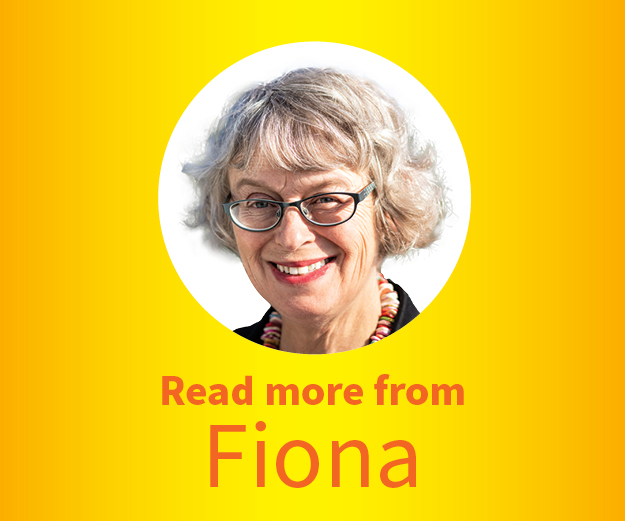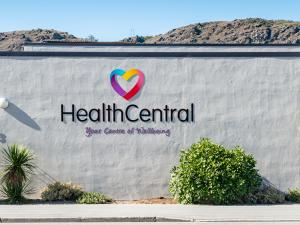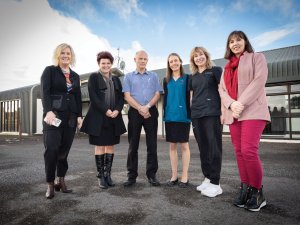Respiratory physician Lutz Beckert considers chronic obstructive pulmonary disease management, including the prevention of COPD, the importance of smoking cessation and pulmonary rehabilitation, and the lifesaving potential of addressing treatable traits. He also discusses the logic of inhaler therapy, moving from single therapy to dual and triple therapy when indicated, as well as other aspects of management
Central Otago practice opens walk-in urgent-care centre
Central Otago practice opens walk-in urgent-care centre

If you want to make change, you’ve got to make it yourself
Alexandra’s largest general practice has jumped in and self-funded a new seven-day urgent-care service to coincide with shifting to a new purpose-built health centre this month.
HealthCentral clinical director and co-owner Kate Dixon says the practice pushed ahead despite funding uncertainty because it was committed to rural primary care and its Central Otago community.
“And we have realised over the last few years that if you want to make change, you’ve got to make it yourself,” Dr Dixon, a specialist GP, says. “You’ve just got to put it out there that this is the model you believe is going to be the best because it’s not going to happen otherwise if you wait.”
The practice will be opening the nurse practitioner-led urgent-care service as part of a new model of care when it moves into its new facility next month (see panel).
Downstairs, it will operate a walk-in urgent-care centre from 8am to 6pm daily, while upstairs will be home to its general practice, pioneering the full integration of physiotherapists into the practice team.
HealthCentral was created by the merger in 2019 of three practices in the Central Otago town of about 6000. In 2022, it purchased the Alexandra Physiotherapy Centre, and later that year, it also bought the staffing-challenged Roxburgh Medical Centre from the local community health trust.
HealthCentral general manager and co-owner Jenaya Smith says the three services between them have 46 staff. All three will operate as a single business with a single-patient management system from 8 July when HealthCentral and its now fully integrated physiotherapist team members were due to move into the new building. The practice currently has just under 9000 patients, including Roxburgh.
Ms Smith and Dr Dixon say opening the urgent-care centre was a response to the wider Central Otago region’s lack of an emergency department or funded accident and medical centre, despite serving a population of about 23,000.
HealthCentral had previously shared a weekend roster with Alexandra’s other practice, with HealthCentral providing about two-thirds of the limited-hours morning and afternoon clinics. But it was now going it alone with a seven-day urgent-care service, which would also be offered as an alternative weekend service to other practices in Central Otago. (Overnight services in the region utilise a telehealth service, which can arrange access to local Dunstan Hospital if appropriate.)
With no local ED, the rural practice’s daily workload was already made up of about 25–30 per cent urgent presentations, Dr Dixon says. However, incorporating same-day presentations into day-to-day business was getting more challenging as patient presentations increased. “So, rather than [acute presentations] being a blended stream into our rural general practice, we are separating them out into urgent care.” A dedicated walk-in centre should also improve patient access and reduce confusion over opening hours.
Setting up and operating the new urgent-care centre is being funded totally from the practice’s existing funding streams, Dr Dixon says, as applications to ACC for urgent-care clinic contracts are closed while the agency reviews its primary care funding model.
Central Otago providers had also unsuccessfully “advocated for many years” to Te Whatu Ora and its predecessors for a portion of ED funding to be paid to practices for emergency acute presentations to primary care, she says. A barrier had been a lack of data on acute presentations in the region, which she hopes the new centre can gather as evidence for future funding applications.
Ms Smith says the practice is “really mindful” that it is a challenging time for primary care, with a lot of uncertainty over future funding and the need to be very efficient with the funding it does have. But it also hoped that its new facility had set up HealthCentral to be able to attract additional funding or contracts for rural primary care services.
“It’s been a passion project for us as we really believe that this is the right model for the community,” Dr Dixon says.
Rural recruitment is known to be a struggle, but the pair say they were “really surprised” to find that advertising to establish an urgent-care service in a new building attracted a number of high-quality applicants. This had allowed them to be “choosey” and recruit two new NPs and two new registered nurse prescribers with specific interests in urgent care.
“It was like a new market we hadn’t looked at before,” Dr Dixon says. Ms Smith says recruitment in general in the past six months had been “really good”, and it has just signed up two permanent GPs for next year, ready to relocate from the North Island with their families, plus two new physiotherapists, who have already started.
Along with the two new NPs, the practice currently has eight permanent and locum GPs, most working three to four days a week, to make the equivalent of six full-time-equivalent GP/NP staff, plus seven registered nurses.
HealthCentral takes pride in the whole practice team working at the top of its scope, Ms Smith says, including investing in upskilling its three health care assistants to do a range of services, including spirometry, phlebotomy and ECGs.
Predicting demand for the new urgent-care centre has involved some “crystal ball-gazing”, Ms Smith says. She expects the peak time to be summer when holidaymakers flock to the region.
It was expected winter might have less demand. But, following a trial of offering some booked general practice appointments at the weekends for immunisations and non-acute presentations, which proved popular, the practice was looking to offer that option again to help make being open all weekend financially viable.
Dr Dixon says HealthCentral also hoped that the health minister’s recent funding announcement about improving access to community radiology could help attract a radiology provider to the new centre. Currently, the practice has to arrange transport for out-oftown visitors injured on the Otago Central Rail Trail to Dunstan Hospital for x-rays.
The practice is owned by six shareholders, including current practice staff Dr Dixon and her specialist GP husband Chris Mulholland, Ms Smith, and former GPs and staff from the practices that merged to form HealthCentral.
Four years after considering remodelling its reception area, Alexandra’s HealthCentral general practice is moving into a new $10 million purpose-built health facility.
HealthCentral general manager Jenaya Smith says the project has been a “huge experience” for herself and clinical director Kate Dixon, its main drivers.
“We’ve learnt a lot and made a lot of personal sacrifice over the years to get to this point,” says Ms Smith, who, with specialist GP Dr Dixon, is proud and relieved the project is now complete.
In 2020, the practice contacted specialist health property company Medispace to discuss remodelling its reception area. Its existing building was home to three formerly stand-alone individual practices that had recently merged but were struggling to work together efficiently because of the building layout.
It soon became clear that more than the reception area needed remodelling, Ms Smith says. Rather than face a lengthy and disruptive renovation, the decision was made to opt for a new centre instead.
Mark Simmons, Medispace project director, says it found the site, a former service station and garage just down the road from the practice’s current site, and located a property investment company ready to fund and own the new health centre.
The resulting 1500sqm new health centre project cost about $10 million, Mr Simmons says. HealthCentral, as anchor tenant, leases about three-quarters of the two-storey building. The centre also includes a pharmacy, café and spaces for other health service providers.
Ms Smith says HealthCentral’s downstairs space is a new urgent-care centre (see main story) that includes a dedicated red-stream entrance with two negative-pressure isolation rooms that can also be used as consult rooms when needed. The main section of the urgent-care centre has three consulting rooms, a procedure room and a two-bed urgent-care space with ambulance access.
Upstairs is home to the general practice, with a central reception and waiting area and 14 consult rooms for the practice’s integrated GP, physiotherapy and nursing team.
The building is made from locally sourced concrete blocks, painted brick and coloured steel and features local schist in some external walls.
Mr Simmons says the project hit some delays when testing after the service station’s demolition revealed hidden contaminated soil that had to be removed from the 2024sqm site before building could begin in March 2023. The building project itself was completed a month early.
We're publishing this article as a FREE READ so it is FREE to read and EASY to share more widely. Please support us and our journalism – subscribe here
One of the benefits of subscribing is you will also be able to share your thoughts about what you read with others in our Comment Stream. You can also take notes on what you read with Capture
TELL US WHAT YOU THINK
You can add your comments using the comment function below, or by sending a Letter to the Editor to editor@nzdoctor.co.nz










![Barbara Fountain, editor of New Zealand Doctor Rata Aotearoa, and Paul Hutchison, GP and senior medical clinician at Tāmaki Health [Image: Simon Maude]](/sites/default/files/styles/thumbnail_cropped_100/public/2025-03/Barbara%20Fountain%2C%20editor%20of%20New%20Zealand%20Doctor%20Rata%20Aotearoa%2C%20and%20Paul%20Hutchison%2C%20GP%20and%20senior%20medical%20clinician%20at%20T%C4%81maki%20Health%20CR%20Simon%20Maude.jpg?itok=-HbQ1EYA)
![Lori Peters, NP and advanced health improvement practitioner at Mahitahi Hauora, and Jasper Nacilla, NP at The Terrace Medical Centre in Wellington [Image: Simon Maude]](/sites/default/files/styles/thumbnail_cropped_100/public/2025-03/2.%20Lori%20Peters%2C%20NP%20and%20advanced%20HIP%20at%20Mahitahi%20Hauora%2C%20and%20Jasper%20Nacilla%2C%20NP%20at%20The%20Terrace%20Medical%20Centre%20in%20Wellington%20CR%20Simon%20Maude.jpg?itok=sUfbsSF1)
![Ministry of Social Development health and disability coordinator Liz Williams, regional health advisors Mary Mojel and Larah Takarangi, and health and disability coordinators Rebecca Staunton and Myint Than Htut [Image: Simon Maude]](/sites/default/files/styles/thumbnail_cropped_100/public/2025-03/3.%20Ministry%20of%20Social%20Development%27s%20Liz%20Williams%2C%20Mary%20Mojel%2C%20Larah%20Takarangi%2C%20Rebecca%20Staunton%20and%20Myint%20Than%20Htut%20CR%20Simon%20Maude.jpg?itok=9ceOujzC)
![Locum GP Helen Fisher, with Te Kuiti Medical Centre NP Bridget Woodney [Image: Simon Maude]](/sites/default/files/styles/thumbnail_cropped_100/public/2025-03/4.%20Locum%20GP%20Helen%20Fisher%2C%20with%20Te%20Kuiti%20Medical%20Centre%20NP%20Bridget%20Woodney%20CR%20Simon%20Maude.jpg?itok=TJeODetm)
![Ruby Faulkner, GPEP2, with David Small, GPEP3 from The Doctors Greenmeadows in Napier [Image: Simon Maude]](/sites/default/files/styles/thumbnail_cropped_100/public/2025-03/5.%20Ruby%20Faulkner%2C%20GPEP2%2C%20with%20David%20Small%2C%20GPEP3%20from%20The%20Doctors%20Greenmeadows%20in%20Napier%20CR%20Simon%20Maude.jpg?itok=B0u4wsIs)
![Rochelle Langton and Libby Thomas, marketing advisors at the Medical Protection Society [Image: Simon Maude]](/sites/default/files/styles/thumbnail_cropped_100/public/2025-03/6.%20Rochelle%20Langton%20and%20Libby%20Thomas%2C%20marketing%20advisors%20at%20the%20Medical%20Protection%20Society%20CR%20Simon%20Maude.jpg?itok=r52_Cf74)
![Specialist GP Lucy Gibberd, medical advisor at MPS, and Zara Bolam, urgent-care specialist at The Nest Health Centre in Inglewood [Image: Simon Maude]](/sites/default/files/styles/thumbnail_cropped_100/public/2025-03/7.%20Specialist%20GP%20Lucy%20Gibberd%2C%20medical%20advisor%20at%20MPS%2C%20and%20Zara%20Bolam%2C%20urgent-care%20specialist%20at%20The%20Nest%20Health%20Centre%20in%20Inglewood%20CR%20Simon%20Maude.jpg?itok=z8eVoBU3)
![Olivia Blackmore and Trudee Sharp, NPs at Gore Health Centre, and Gaylene Hastie, NP at Queenstown Medical Centre [Image: Simon Maude]](/sites/default/files/styles/thumbnail_cropped_100/public/2025-03/8.%20Olivia%20Blackmore%20and%20Trudee%20Sharp%2C%20NPs%20at%20Gore%20Health%20Centre%2C%20and%20Gaylene%20Hastie%2C%20NP%20at%20Queenstown%20Medical%20Centre%20CR%20Simon%20Maude.jpg?itok=Z6u9d0XH)
![Mary Toloa, specialist GP at Porirua and Union Community Health Service in Wellington, Mara Coler, clinical pharmacist at Tū Ora Compass Health, and Bhavna Mistry, specialist GP at Porirua and Union Community Health Service [Image: Simon Maude]](/sites/default/files/styles/thumbnail_cropped_100/public/2025-03/9.%20Mary%20Toloa%2C%20Porirua%20and%20Union%20Community%20Health%20Service%20in%20Wellington%2C%20Mara%20Coler%2C%20T%C5%AB%20Ora%20Compass%20Health%2C%20and%20Bhavna%20Mistry%2C%20PUCHS%20CR%20Simon%20Maude.jpg?itok=kpChr0cc)